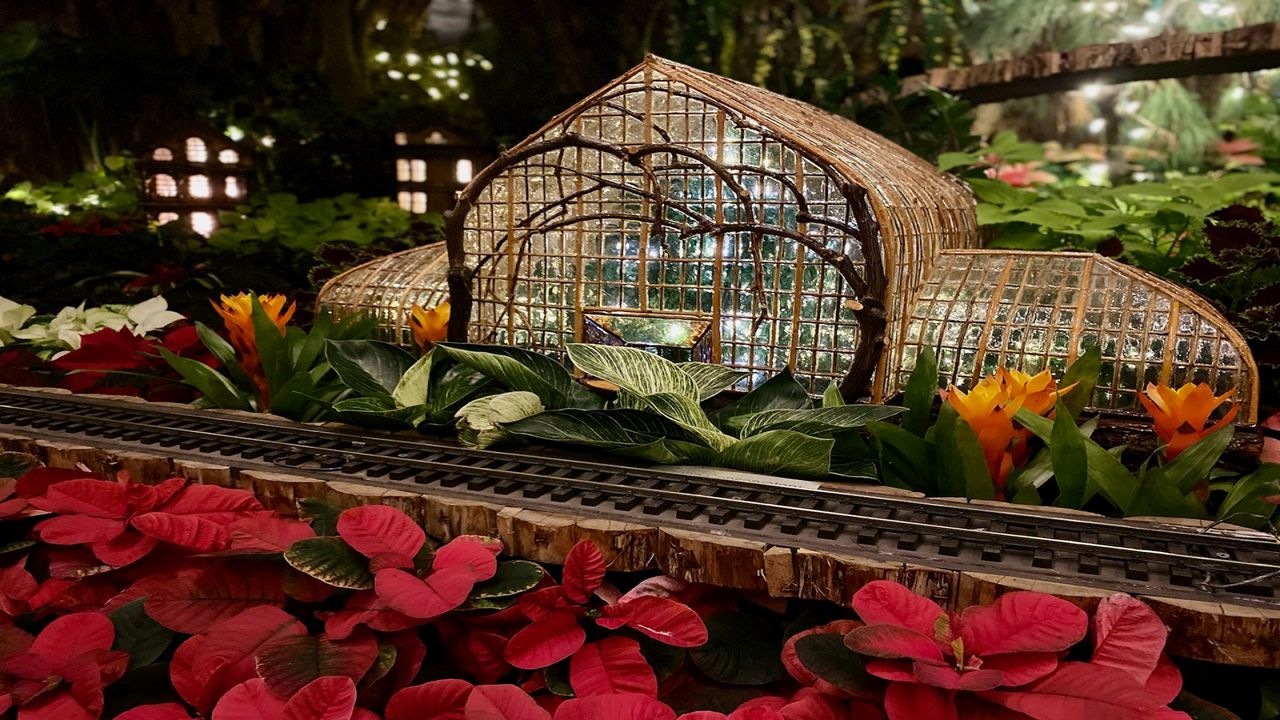CINCINNATI — For nearly two decades, Mark House has worked to make sure Krohn Conservatory comes to life every winter and its visitors have a memorable holiday experience.
What You Need To Know
- "Trains and Traditions" is this year's holiday show at Krohn Conservatory
- An annual tradition, the holiday show brings 40,000 visitors every winter
- There are more than 1,000 poinsettias, miles of model train railway and various pieces of botanical architecture created to look like Cincinnati landmarks
- Mark House, Krohn's GM, said the show takes three years to plan
The stunning greenhouse with its lush plant displays is one of the most beloved institutions in the Queen City, ranking among favorites, like the Cincinnati Zoo, Union Terminal and Kings Island.
House, who is Krohn’s general manager, is responsible for overseeing the staging of its winter show, which runs through Jan. 9. The production is a multi-faceted event with festive lights and more than 1,000 poinsettias, a plant synonymous with the Christmas season.
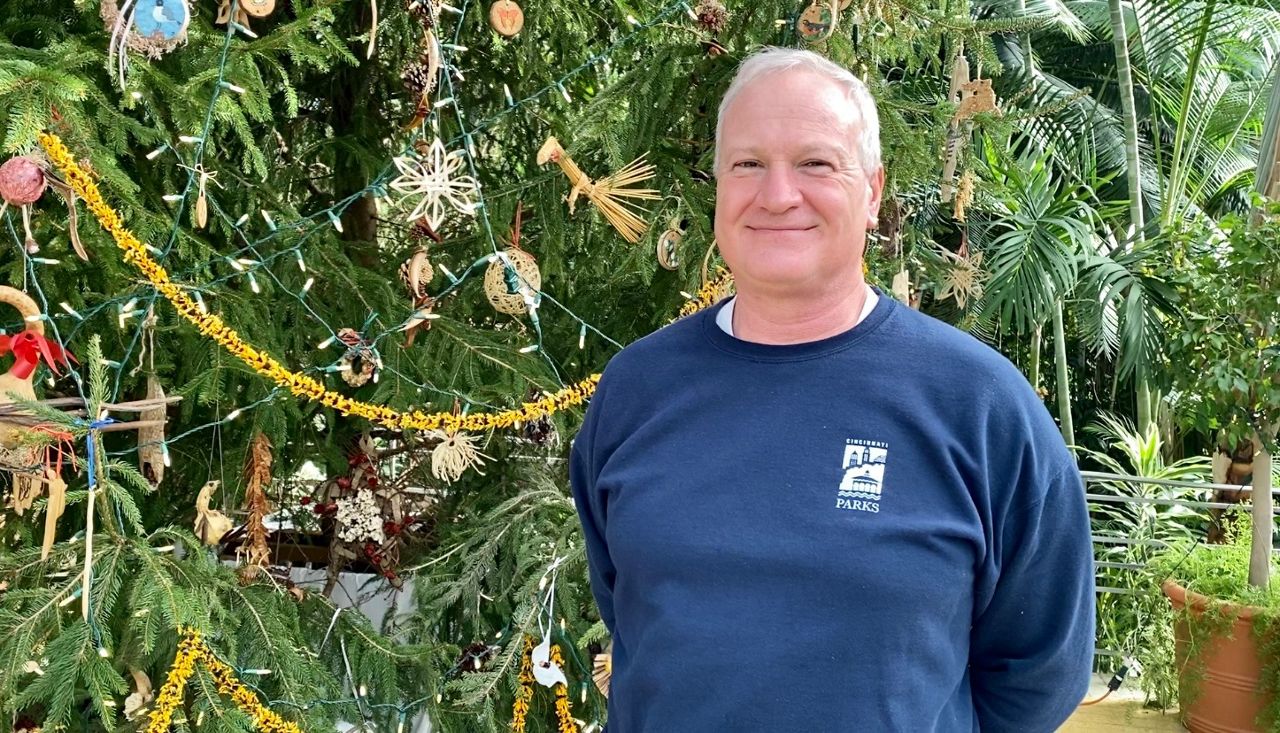
A towering Christmas tree greets guests as they enter the space. A group called the Krohn Crafters spent all year creating the nature themed decorations that adorn it.
It also features a charming model railroad that navigates around an ornate garden village featuring houses and storefronts resembling those seen across the city.
There’s a working replica of the Cincinnati-Clifton Incline Plane, better known as the Bellevue Incline, a funicular railway that once traversed the steep hill between Elm Street in Over-the-Rhine and Ohio Avenue in Clifton Heights. There’s also a model of Salem United Church of Christ at the bottom of the hill, just like there was in real life.
But perhaps the most spectacular elements are the botanical models of Cincinnati landmarks and historic buildings replicated entirely from natural plant materials, like leaves and twigs.
The newest display is of Findlay Market.
“It’s so detailed that they didn’t finish it until two days before the show opened,” House said. “I knew they’d come through, they always do, but I can’t lie, we were really nervous. They brought it in, put it in place and said, ‘Don't touch it! It's still wet.’”
The winter show also features traditional holiday plants, like cyclamen and conifer trees.
“It’s really a throwback to the heritage of the region,” House said. “There's a lot of descendants of German immigrants here that traditionally like to see those kinds of plants.”
Krohn’s storied history
First opening in 1933, Krohn Conservatory is located in Eden Park, a rambling 186-acre hilltop area sandwiched between the Mount Adams and Walnut Hills neighborhoods and overlooking the Ohio River. The land was once owned by Nicholas Longworth, whose family name is found on landmarks across Cincinnati.
Longworth, who operated a vineyard on the site, called Krohn his “Garden of Eden.”
It’s still a fitting name today, with an assortment of tropical vegetation ranging from palm trees and rubber plants to rare vanilla orchids; there’s even a waterfall.
The mostly glass and metal conservatory building was built in the Art Deco style, with a large Gothic arch and curved glass ceilings.
Krohn’s colorful blooms and lush flora are a year-round draw, but it is the seasonal exhibits that attract the largest crowds. Most people probably know the facility from its butterfly show, when thousands of the colorful creatures are allowed to fly freely through the space each spring.
Applied Imagination is the local company behind the holiday display. Now in its 30th year, the firm’s team of artisans, fabricators and model train engineers create these installations for venues and events across the nation.
Some include the New York Botanical Garden in the Bronx; the United States Botanic Garden in Washington, D.C.; and the Biltmore Estate in Asheville, N.C.
At Krohn, you’ll find recreations of Cincinnati landmarks, miniature versions of sites like Queen City Tower, the famed homes of Columbia-Tusculum and some of the Cincinnati parks, like Ault Park Pavilion and nearby Spring House gazebo. There’s even a mini Krohn Conservatory.
There are lights and displays outside the conservatory as well.
On Eden Park grounds, there’s a live nativity that features an assortment of barnyard animals, including six sheep donated from House’s family farm. There are five female sheep — Holly, Dolly, Polly, Molly and the "fat ewe," Golly. The lone male earned the name Golly because he was a “bit of a surprise.”
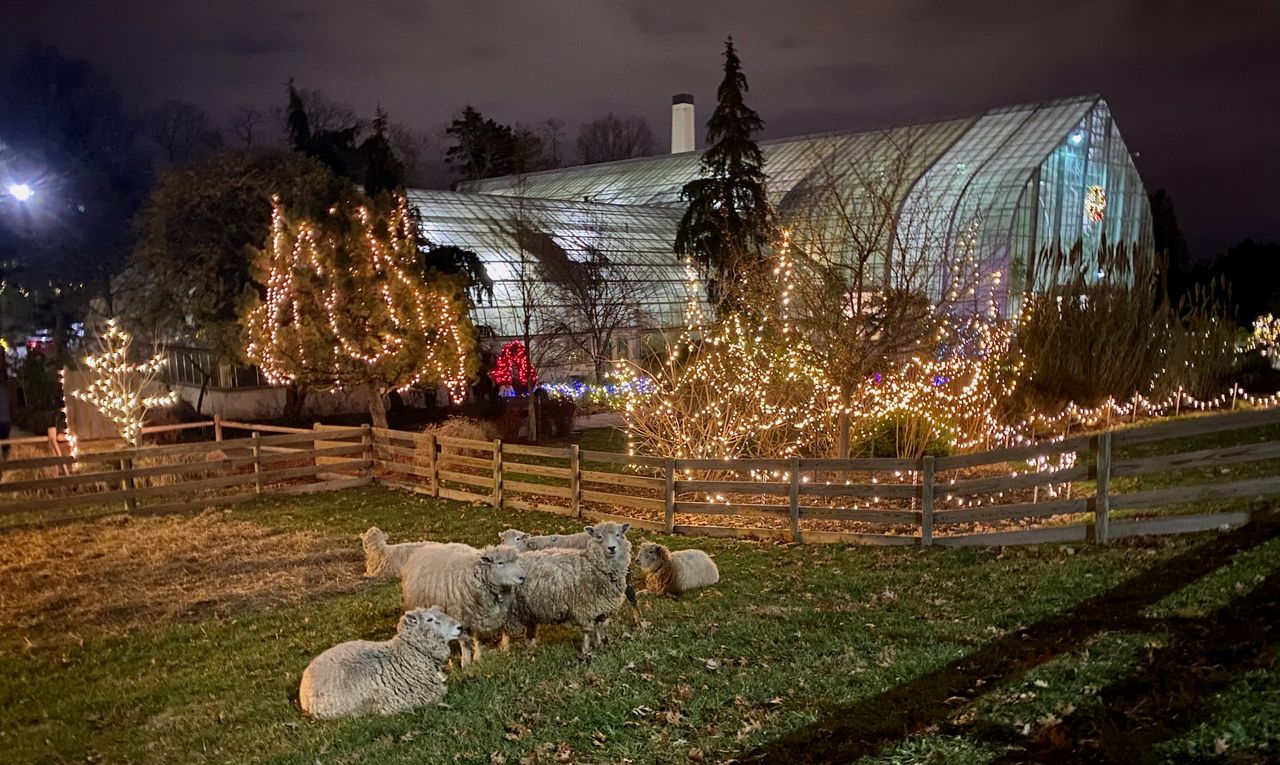
“We had five females so we assumed the sixth would be a female as well. When he was born we said, ‘Oh, Golly – he’s a male,’” House laughed. “We decided to have some fun with the name.”
Each winter show has a theme; this year it’s “Trains and Traditions.” The events take about three years to plan and produce. That may seem like a long time until you realize organizers have to grow all the plants, build the displays and map out the overall look.
All the flowers at Krohn are grown at their production greenhouse in Finneytown, Ohio. That facility, which isn’t open to the public, is just as large as Krohn.
It takes a total of three weeks each November to install the show. Once it’s over, the whole display is dismantled and removed in early January.
“We take the best plants and we put them up for sale in the lobby,” House said. “That helps us recover some of the costs it took to grow them.”
There’s no time for House and his team to rest. They almost immediately begin preparing and installing the spring show, which features daffodils, tulips, hydrangeas and lilies.
A green thumb leads to the ideal job
House began working at Krohn in 2002 but he took an unusual path to what has become his dream job.
With a father who was an engineer at GE Aviation, House felt destined to go into the sciences. But he soon found he was more attracted to botany and biology than other fields.
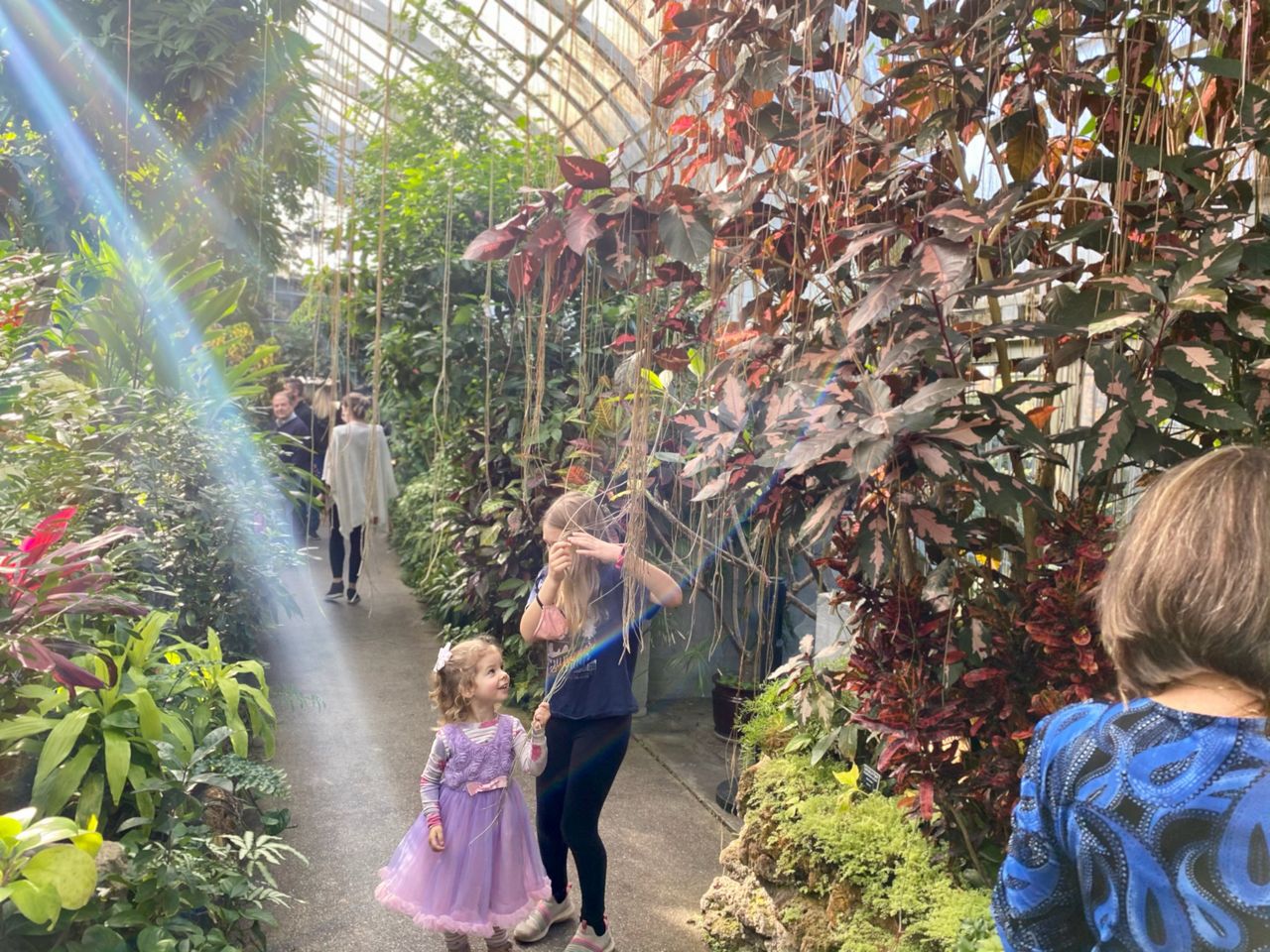
House grew up on a farm in Camden, Ohio, a small town with just 2,000 people. It was on the farm where House got his first taste of growing plants. But it wasn’t until his father relocated to Paris for work that his love truly blossomed.
While living in the City of Lights, House would visit the ornate Palace of Versailles almost every day after school.
“I would see these workers growing the citrus trees, and I would ask them questions. They were really helpful,” House said. “Before long I was growing my own.”
When he moved back to Ohio, House went to college and earned degrees in horticulture and botany from Cincinnati State and Ohio State University.
After graduation, House was reading a newspaper and saw an ad for a job at Krohn.
“When I went to the interview, I took some of the citrus fruit I had grown myself and showed it to the interviewers, and they liked that,” he said, laughing.
House has worked many of the winter shows in the past, but this is his first year supervising the entire event. House calls Krohn a “living museum.”
The conservatory exposes guests to plants they may not be able to see in their more exotic native habitats. He said that has resulted in a “funny nickname” for the Krohn Conservatory: “A poor man's Florida.”
A bit of summer in the winter
The holiday show dates back to before Krohn opened. There were two earlier conservatives before it, including one from 1888 built from wood. People in the region began falling in love with that conservatory’s poinsettia-themed show.
“When the Krohn Conservatory was built, that tradition continued and expanded and grew,” House said.
“It's become a sentimental destination for families here in Cincinnati,” he added. “Because we hear these families talking and we realize in this modern day and age, families are spread all over the United States, even the world. But they get back together during the holidays and they come here to get their family picture taken in front of our poinsettia tree or a big Christmas tree.”
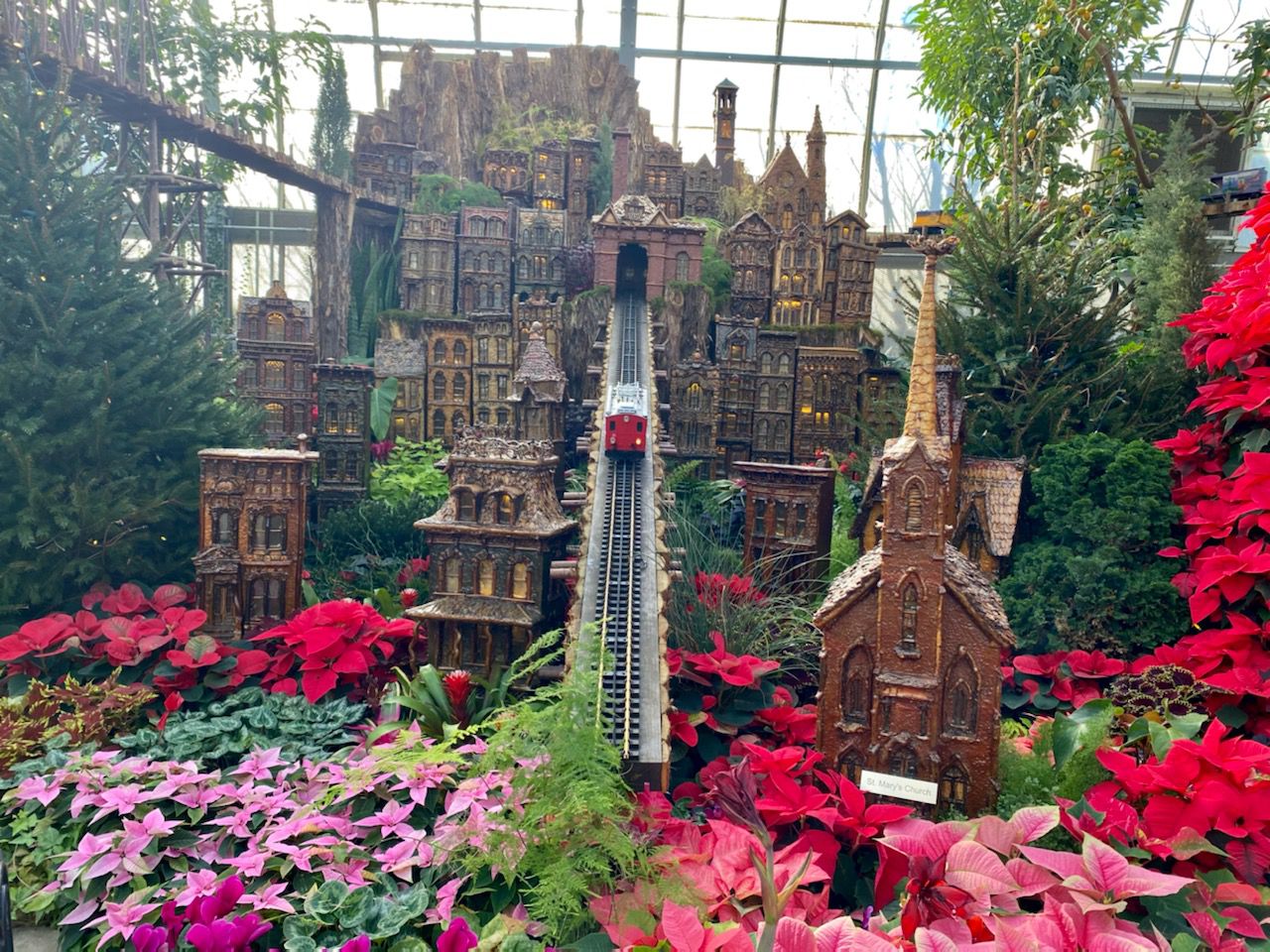
For others, it's just a nice getaway.
“It's always summer here, even at Christmastime,” House said. “On these really cold days during the holidays, people will come in here and just relax. They reconnect with their families and that's very important to me, that we provide that.”
The holiday season is especially busy for Krohn. An estimated 40,000 visitors are expected in December alone.
The seasonal shows are an important economic driver for the conservatory, which is entirely self-sufficient. All of Krohn’s operating expenses are covered by admission fees and sales in the gift shop.
Any extra profit gets reinvested in Krohn, House said.
For 78 years, the conservatory was free and the city of Cincinnati footed the bill. That changed in 2012 when the City Council cut some of the budget for Cincinnati Parks, which owns and operates the conservatory.
“I was afraid that the conservatory would go the way that so many others have because they’re just so expensive to operate,” House said. “I was afraid it would be closed down.”
Parks decided to let Krohn charge a “small fee” – $7 for children, $10 for adults.
“It's about the cheapest tropical vacation you can take,” he said.



